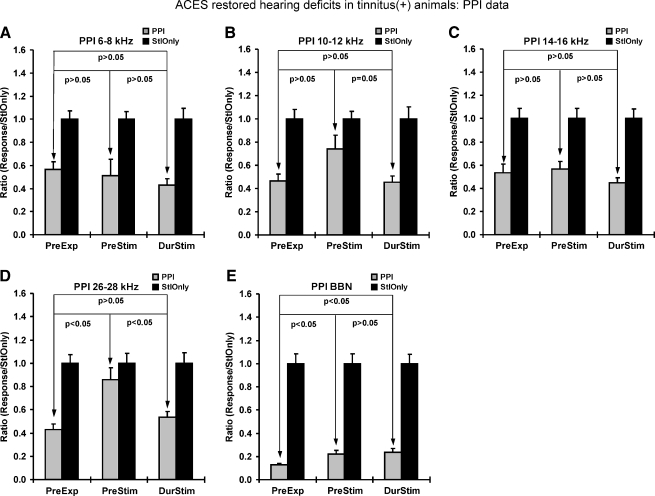FIG. 4.
Data showing tone-induced PPI deficit and ACES-induced reversal of the PPI deficit. Robust PPI responses (PreStim condition) were seen at all frequencies prior to tone exposure, indicating normal PPI responses (A–E). Comparison among PreExp, PreStim, and DurStim conditions demonstrated that following tone exposure, PPI was significantly attenuated at 26–28 kHz and BBN. The data showed a tendency of tone-induced PPI attenuation at 10–12 kHz, although the statistics did not reach the significance (p = 0.07). In addition, although the statistics reached a significant level for PPI responses at BBN, the fact that PPI response was robust compared to startle-only response demonstrated that PPI responses were not significantly attenuated at BBN, indicating a hearing detection. Following ACES, the attenuated PPI responses were significantly reversed at 26–28 kHz and marginally reversed at 10–12 kHz (p = 0.05) (B, D). Comparison between PreExp and DurStim conditions demonstrated that ACES reversed the affected PPI to the normal state (PreExp condition) (B, D). PreExp before tone exposure, PreStim after tone exposure but before ACES, DurStim during ACES to suppress tinnitus. Error bars represent the standard error of the mean.

